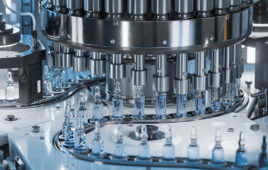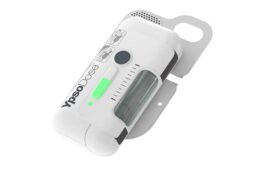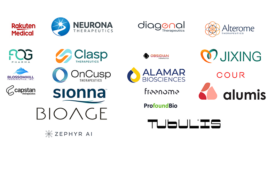
[Image courtesy of Looking Glass Factory]
The combination, according to Looking Glass Factory officials, enables drug designers to view molecular structures and compositions in true 3D right on their desktops, without having to wear VR or AR headsets.
Looking Glass Factory CEO Shawn Frayne recently discussed the combination of the technologies via email with Drug Discovery & Development:
Drug Discovery: Describe what came out of the new partnership with Schrödinger?
Frayne: With Looking Glass Factory’s partnership with Schrödinger, we were able to directly integrate our Looking Glass displays to work seamlessly with one of the world’s leading drug discovery platforms. Schrödinger software is deployed across many top biopharma companies in the industry, and this integration means that any computational chemist or molecular modeler who was already using Schrödinger’s Maestro or PyMOL Incentive as part of their drug discovery workflow can now get started with viewing structures in a Looking Glass display in 3D in no time.
Drug Discovery: Why is this an advantage over what was available before?
Frayne: Combining the Looking Glass displays with Schrödinger’s state of the art computational platform enables existing (and new!) Maestro and PyMOL Incentive users to view molecular structures better, faster and in full three-dimensions without the need for AR/VR headsets or any other 3D glasses technology. Navigating through hundreds of molecular models requires a great deal of time and effort, and sometimes information can be missed if using traditional 2D monitors. Viewing models with lifelike depth and dimensionality can help to reduce the time that molecular modelers would otherwise spend examining wrong drug candidates as well.
Drug Discovery: Are there times when VR and AR headsets still make sense? They seem to provide pretty immersive experiences.
Frayne: The Looking Glass is an effective collaboration tool that can sit between a molecular modeler and a medicinal chemist, and allows them to work together to intervene, interact with and explore 3D structures and simulations for quick insight. While AR/VR headsets do have an advantage of letting you see room-scale expansions of 3D structures, they are also cumbersome to set up, maintain and most especially, difficult to use collaboratively in group settings. It’s worth mentioning that a lot of the time, you simply don’t need to see a room-size molecular structure — a holographic 3D representation that sits on your desk works better for demonstrating 3D information whilst maintaining the ability for shared work.
Drug Discovery: What kind of innovations might the new displays enable?
Frayne: One of the things we’ve heard from early users is just how seamless the process it is to get started with Maestro / PyMOL Incentive and the Looking Glass displays. Even in previous work configurations with 3D displays (and pairing 3D glasses), users would still have to spend time charging their peripherals, calibrating their glasses and in most cases, some users would also feel nausea and motion sickness from staring at the 3D screens for too long. The Looking Glass eliminates all these extraneous steps and most importantly, is comfortable for the user to look at for long periods of time.
For a fuller picture of what kind of innovations are coming, we’re hosting a webinar entitled “The State of Holographic Displays in Research and Development Today” on Oct. 6, 2020.
Revolutionizing Drug Discovery with the Looking Glass from Looking Glass on Vimeo.
Filed Under: Drug Discovery, Drug Discovery and Development





Tell Us What You Think!
You must be logged in to post a comment.